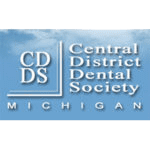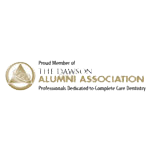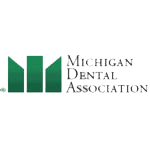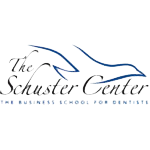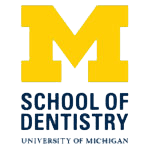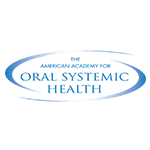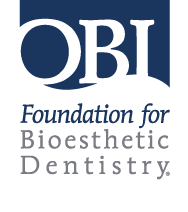Lansing’s Top-Rated Preventive Care Dentistry
Bechtel Dentistry prioritizes preventative care for all of our patients. Our holistic & biologic dentistry creates custom preventative plans that promote overall wellness and optimize oral health. When we talk about diseases in the mouth and loss of teeth there are some important considerations that bear repeating. The three primary causes of tooth loss are: tooth decay (cavities), periodontal (gum disease), and Occlusal disease or bad bites. These are all diseases of choice, meaning you do not have to have them if you don’t want them. However, you do have to know how to control or avoid them! Prevention can be primary, secondary, or tertiary. Primary prevention focuses on taking away the risk of future disease. Secondary prevention focuses on taking away the risk of current disease and tertiary prevention focuses on fixing the damage from previous disease. Only you have the power to take the disease away. We are here to guide you and help you!
Tooth Decay
Cavities/tooth decay/caries are all descriptions of damage that occurs to a tooth from repeated or chronic acid attack. The primary cause of acid attacks on teeth is bacteria. Bacteria adhere to one another to form a sticky white mass called plaque or biofilm. This plaque tends to adhere to all available surfaces of a tooth leading to tooth decay, if not removed from the tooth surface. The plaque secretes acid byproducts that dissolve the tooth structure and make it soft. Once the tooth has a cavity it is infected. If a tooth decays long enough the bacteria can penetrate through the tooth and in the nerve or pulp causing severe pain or causing the nerve or pulp tissue to die. If the nerve dies the bacteria can travel under the tooth into the bone and bloodstream. In rare situations, these infections can become life-threatening as it travels through the body to vital organs.
Sugar consumption is often linked with causing tooth decay but it is not the causative agent in and of itself. If you didn’t have the specific strains of bacteria that cause tooth decay, you could consume all the sugar you wanted too and you would not develop a cavity. It may not be good for your health but your teeth would not decay. Unfortunately, almost all of us have the bacteria in our mouths that cause tooth decay. These bacteria are transmitted amongst us through the sharing of saliva. This sharing can be kissing, using the same utensil or glass as someone else, licking a dirty pacifier clean and giving it back to your baby, double-dipping that chip into some chip dip, etc. Once you have the bacteria, you have it for life. Sugar consumption is like giving steroids to the bacteria. It is the perfect food for the bacteria and they multiply and release acid byproducts on the tooth after they consume the sugar. So then we need to think about prevention in terms of stopping the bacteria and the acid attack cycle.
In order to stop bacteria and their acid attacks, you need to be able to keep them off of your teeth. Your ability to control your disease will dictate how much money, time, and discomfort you have to spend in your life, on your mouth. I don’t know anyone who wouldn’t say they want as little of these things as is humanly possible through their lives. Yet we get into habits that don’t support that outcome. So brushing and cleaning the surface of each tooth – all 360 degrees around the tooth is the key to avoiding tooth decay. This needs to be done thoroughly 1-2 times a day. Rinses and other oral medicaments can be helpful but physically brushing and scrubbing the plaque (bacteria) off the teeth so they feel smooth and squeaky clean is the best prevention.
Diet is also a critical component in prevention. Avoiding foods and beverages that are high in sugar or high in acidity is critical in prevention. The acidity of certain foods can turn our normally alkaline mouths into acid baths. The excessive consumption of soda pop (diet or regular), energy drinks or sports drinks can also lead to tooth decay. These beverages destroy the natural acid-base balance in our mouth and make the mouth acidic. It takes our mouths 45 minutes, if we have healthy saliva flow, to neutralize the acidity of one swig of one of these beverages. So if you drink one beverage slowly throughout an afternoon or evening, your mouth will remain acidic for hours. This drops your pH into the acidic range of 4.4 or less (neutral is 7) for hours. Anything left soaking in an acid bath will begin to dissolve and teeth are no different.
We tend to focus on coaching in our hygiene department because we want to help you be as healthy and free from dental diseases like tooth decay as you can be! So we track how well you keep your teeth clean with a dental fitness program. We can tell you your risk of future disease based on how well you are able to keep the plaque off of your teeth.
In our office, we also utilize other treatments to help reduce your risk of tooth decay. Some of these preventive treatments are sealants and topical fluoride varnish applications. Sealants are a protective coating that releases fluoride (shown to retard bacteria and demineralization of a tooth) that can be applied to the grooves of a tooth surface to seal them from bacteria or acid attacks. Topical Fluoride treatments can be used to reduce the risk of tooth decay and help remineralize teeth that have already started to decay. As always frequent wellness cleanings and examinations are critical to helping you prevent problems like tooth decay before they begin.
Gum Disease
Periodontal disease or gum disease is caused by specific strains of bacteria that cause inflammation in the gum and bone supporting the tooth. This process typically occurs with no pain or sensitivity so there is very little awareness of a problem. Much like tooth decay the best form of prevention is to avoid allowing the plaque or bacteria to adhere to your teeth. So brushing and cleaning the surface of each tooth – all 360 degrees around the tooth is also the key to avoiding gum disease. This needs to be done thoroughly 1-2 times a day. Rinses and other oral medicaments can be helpful but physically brushing and scrubbing the plaque (bacteria) off the teeth so they feel smooth and squeaky clean is the best prevention. With gum tissue, we need “zero tolerance” for bleeding. If gums are bleeding they are inflamed and hence diseased. Once you have gum disease you can no longer prevent it, it has to be controlled. The goal of oral therapy is to disrupt the biofilm, the sticky substance that contains bacteria around the teeth and in the pockets. Prevention of gum disease centers around really being able to control the plaque levels on your teeth and making sure that the gum tissue is healthy and does not bleed. Again, we tend to focus on coaching in our hygiene department because we want to help you be as healthy and free from dental diseases like tooth decay as you can be! So we track how well you keep your teeth clean with a dental fitness program. We can tell you your risk of future disease based on how well you are able to keep the plaque off of your teeth.
Occlusal Disease or Bad Bites
A bad bite is any type of bite that places excessive or misdirected force on a tooth causing the tooth to breakdown. Bad bites can accelerate gum disease and cause a tooth to be weakened or eventually lost. Teeth can be weakened by biting forces in different ways. Sometimes the gum and bone support around an overloaded tooth can cause the bone and gums to recede down the root of a tooth. Other times excessive forces can cause a tooth to fracture, crack or break. Often times a chewing system that is not operating in sync is to blame. If the muscles, teeth, and bone are at war with each other, the teeth are always the losers. In a properly aligned system, the lower jaw can rest properly in the joint or TMJ and all the teeth come together at the same time. If the system is not in sync, the teeth will not fit together correctly when the jaw is at rest or when the jaw is at rest, the teeth do not fit together evenly or at the same time. This creates a rock between the teeth or the joints. The teeth are the weak link in this equation.
So how can we prevent this from occurring? A temporary fix may be an orthotic splint that gives a stable bite in relation to the jaw seating into a joint. The best way to correct the problem and prevent tooth loss is to stabilize the bite in relation to the joint. This usually starts out with splint therapy and when it is determined, through therapy, that the lower jaw can rest properly into the joint with noxious muscle activity turned off, then the bite is equilibrated or leveled to match the splint and allow the jaw to seat in the joint with all the teeth touching and guiding or working together in harmony in various mouth movements.
Preventive care is a team effort. In order for prevention to be effective, the patient and the dental team need to work in a collaborative partnership, toward the goals set by the patient. This is best determined based on risk factors outlined at the new patient visit.
Schedule Your Dental Appointment Today!
Dr. Bechtel and our Lansing, Michigan dental team are committed to providing exceptional care and empowering our patients with information about their dental health. If you have any questions about our preventative care services or would like to schedule an appointment, we invite you to contact us at 517-882-7132. Our holistic dentistry offers comprehensive treatments that promote overall wellness for our patients living throughout Lansing, Holt, Okemos, Mason, Grand Ledge, Dewitt, Haslett, Williamston, St. Johns, Charlotte, Eaton Rapids, East Lansing, and Potterville.





